In the mental health field, trust begins long before the first session—it starts with your website. For many clients, your site is their first interaction with your services, and in that moment, design makes a powerful impression. A well-designed website for a mental health therapist must do more than just look nice; it should offer safety, clarity, and connection.
This article explores the essential components of website design that every therapist should consider, from branding and layout to emotional engagement and conversion optimization.
1. Establishing a Calming, Trustworthy Brand
Your website should visually reflect the core of your therapeutic approach. Soft, soothing colors such as pale blues, muted greens, or warm neutrals help create a sense of peace. The typography should be easy to read and accessible, with headers that clearly divide content into digestible sections.
A welcoming headshot, a simple logo, and an authentic tagline like “Healing starts with a conversation” can make a profound impact. Ensure that your brand feels human—clients should immediately feel that your practice is a place of empathy and professionalism.
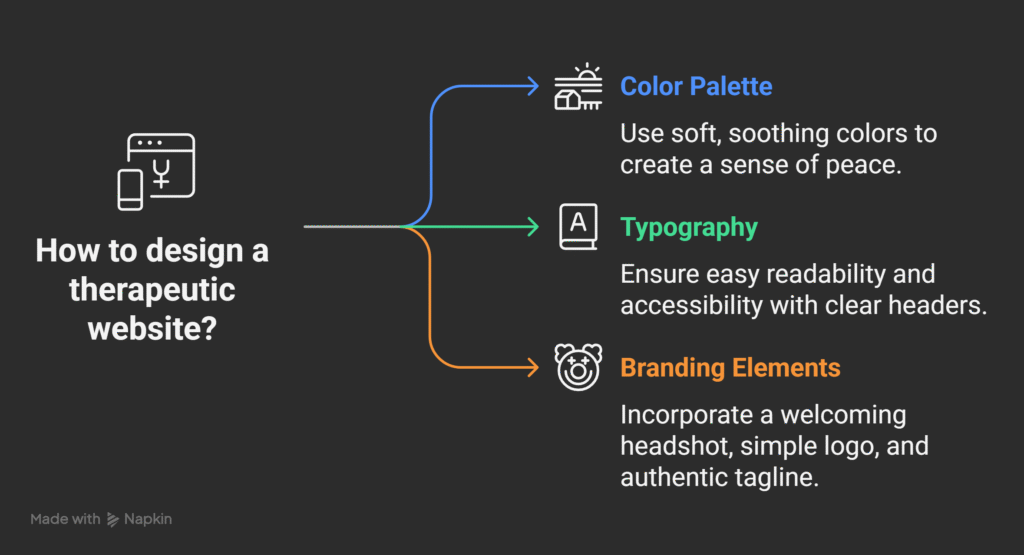
2. Clear Navigation and Purposeful Structure
Clients visiting your site are often experiencing emotional distress or uncertainty. Don’t make them work hard to find what they need. Keep your main navigation simple and intuitive:
- Home
- About
- Services
- Resources or Blog
- FAQs
- Contact

The homepage should answer key questions quickly: Who are you? What do you offer? Where are you located? How can someone book a session?
Internal links should help users navigate smoothly. For example, from the home page, include a prominent CTA that connects directly to your contact or scheduling page.
3. Warm, Empathetic Messaging
Copywriting is design. The words on your website should feel as comforting and supportive as a therapy session. Speak directly to your ideal client’s challenges using “you” language instead of clinical terminology.
For instance:
“You may feel overwhelmed, anxious, or stuck—and that’s okay. I help people navigate these emotions with care and clarity.”
Your About page is an opportunity to blend professionalism with heart. Talk about your credentials, yes—but also share why you chose this field, and how you connect with your clients.
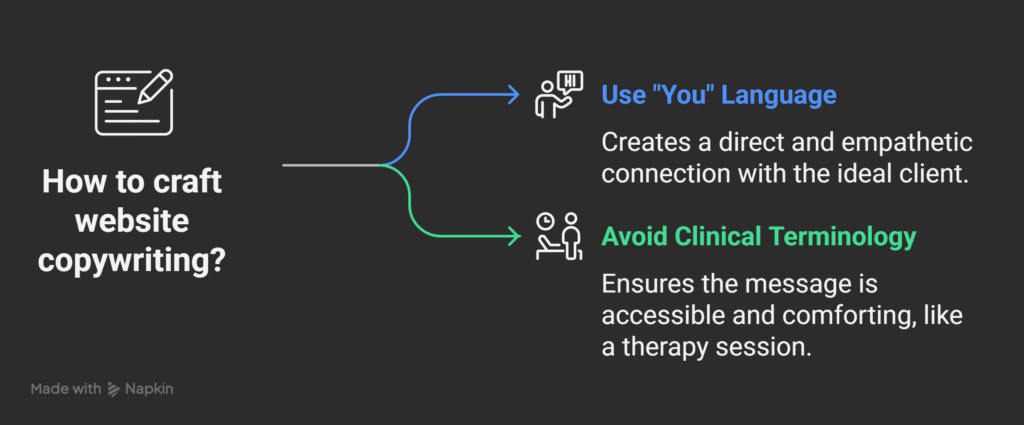
The Services page should highlight benefits, not just modalities. Explain how therapy helps, what clients can expect in sessions, and how to get started.
4. Mobile Optimization and Accessibility
With over half of all website traffic coming from mobile devices, your website must look and function beautifully on smartphones. That means:
- Fast load times
- Responsive design that resizes content correctly
- Easy-to-tap buttons
- Click-to-call features
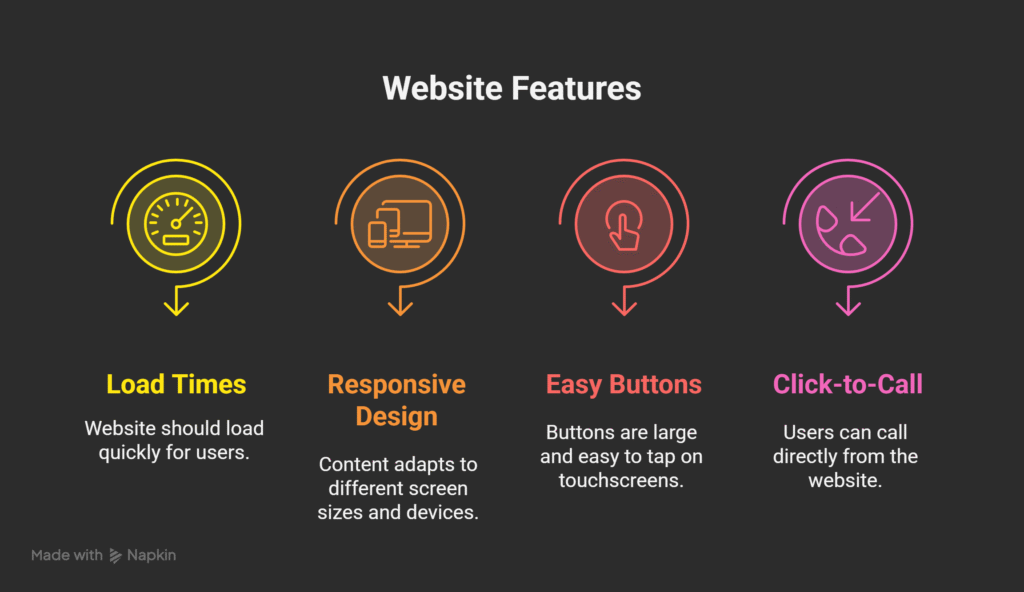
Accessibility is equally important. Use high-contrast text, alt tags for images, descriptive link text, and readable font sizes to ensure your site supports users of all abilities. Not only is this ethical—it also improves SEO and user trust.
You can learn more about how optimized sites improve performance in this guide on mobile-friendly design for therapists.
5. Compelling Calls to Action (CTAs)
Every page should gently guide visitors toward a next step. Whether it’s booking a free consultation, downloading a self-care checklist, or reading your latest blog post, CTAs create flow and direction.
Effective CTA examples for therapy websites:
- “Schedule a free 15-minute consultation”
- “Learn more about anxiety therapy”
- “Download your free mindfulness guide”
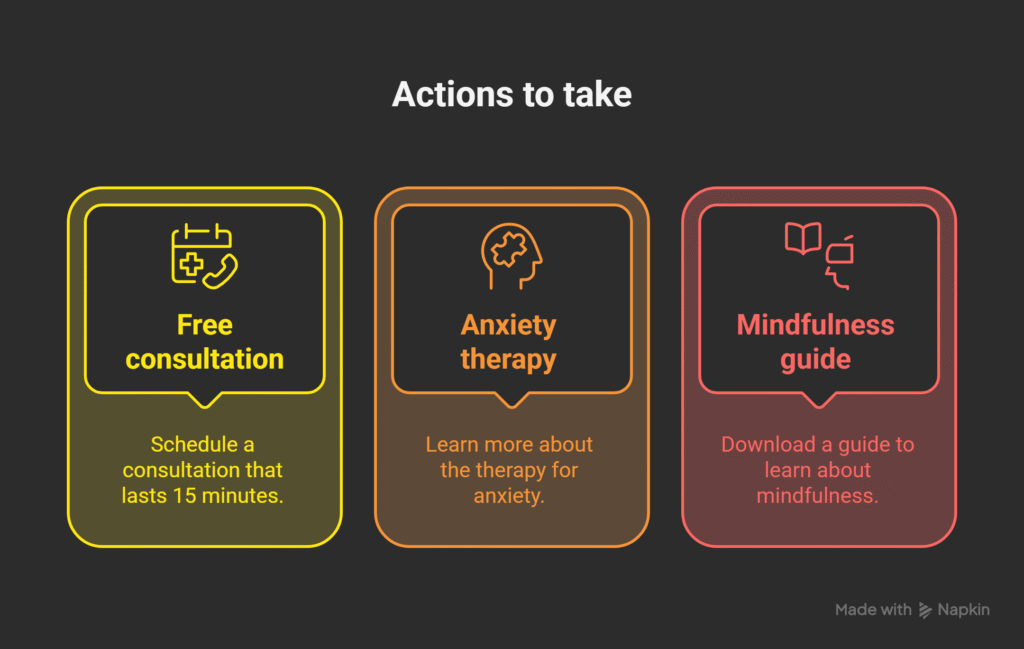
Place CTAs above the fold (visible without scrolling), and again at the end of each page. This makes it easy for clients to act when they feel ready.
6. Real Imagery That Connects
Stock photos of people smiling at desks don’t foster trust. Real, warm, human images do. If possible, include:
- Professional photos of yourself (not just headshots, but you in your office)
- Calming visuals of your therapy space
- Gentle natural scenes (like forests or water) to evoke peace
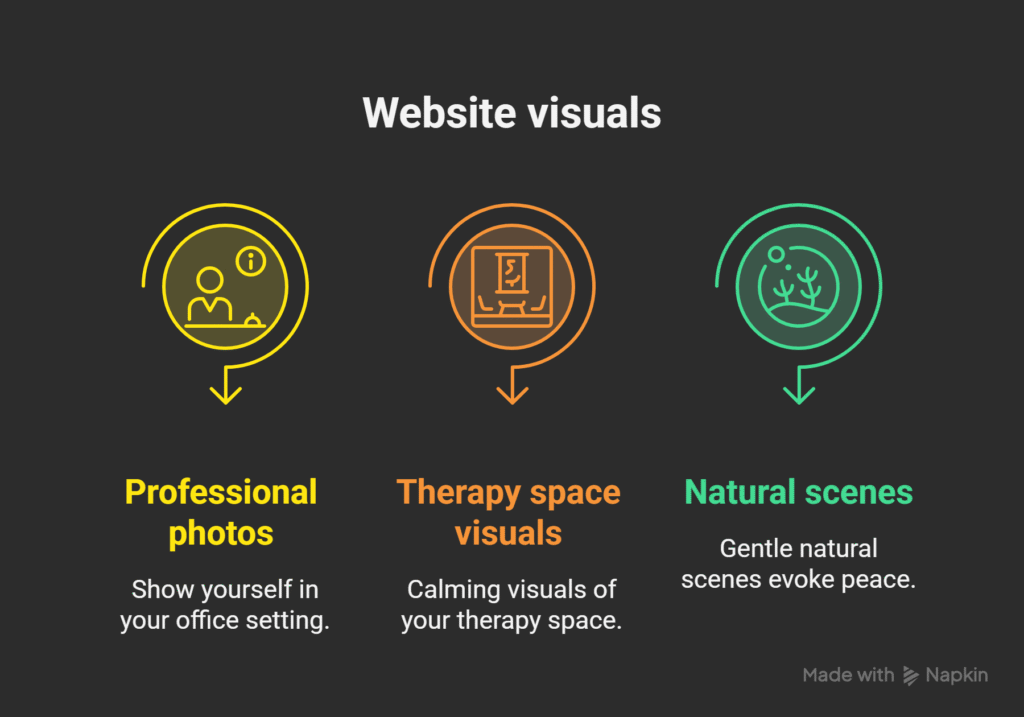
Clients often feel vulnerable when reaching out—authentic images reassure them that your practice is a safe space.
7. Educational Blog or Resource Section
Creating helpful content builds authority and keeps your website active in Google’s eyes. A simple blog with topics like “What to Expect in Therapy” or “Coping with Social Anxiety” provides immense value.
This content helps:
- Answer client questions
- Improve SEO through keyword usage
- Create internal links to your services
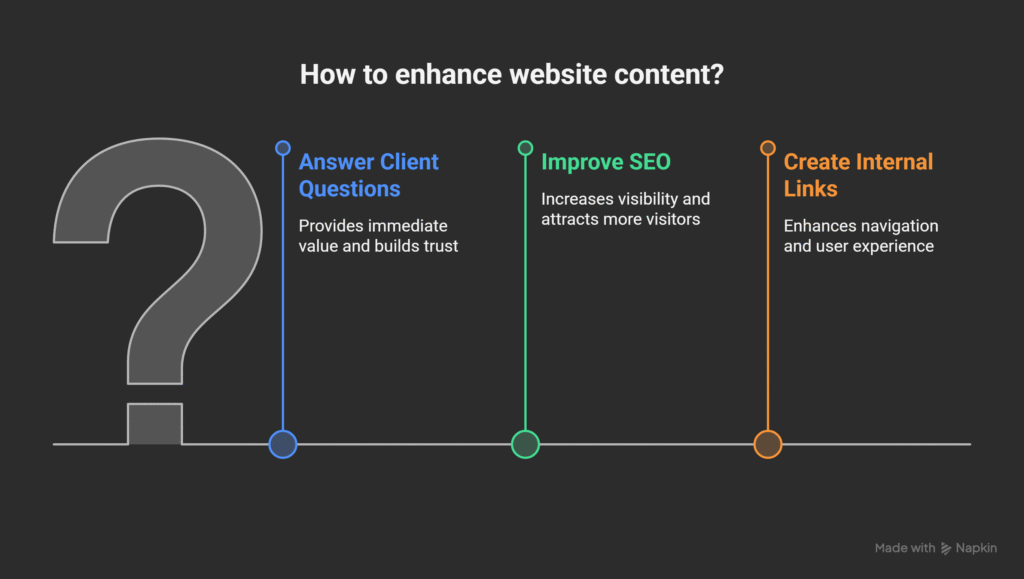
Try linking posts like “Signs of Burnout” to your stress management therapy page, or your homepage. If you’re new to blogging, start with two posts per month and repurpose the content for emails or social media.
See why blogging matters in Why Every Therapist Needs a Blog.
8. Showcase Specialties and Niche Services
If you specialize in a particular client group or modality—such as trauma therapy, ADHD counseling, or couples therapy—highlight this prominently. Create dedicated service pages for each offering, optimized with specific keywords.
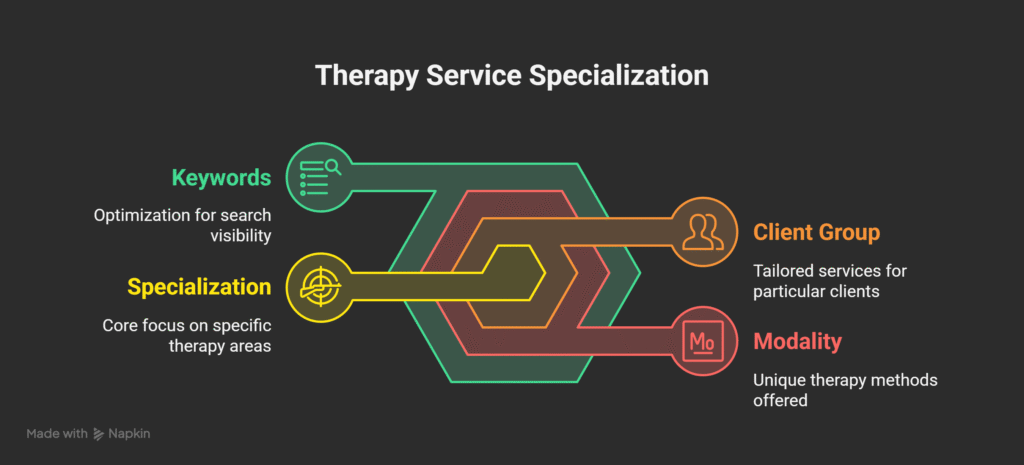
This specificity not only boosts SEO, it ensures you’re attracting the right clients. You can explore more ways to do this in The Ultimate Digital Marketing Guide for Therapists.
9. Integration with Practice Tools
A good website should integrate seamlessly with your existing systems. Connect your scheduling software (e.g. SimplePractice, Calendly), client portal, and even payment system.
Ensure everything feels cohesive. The fewer steps a client has to take, the more likely they are to book and return.
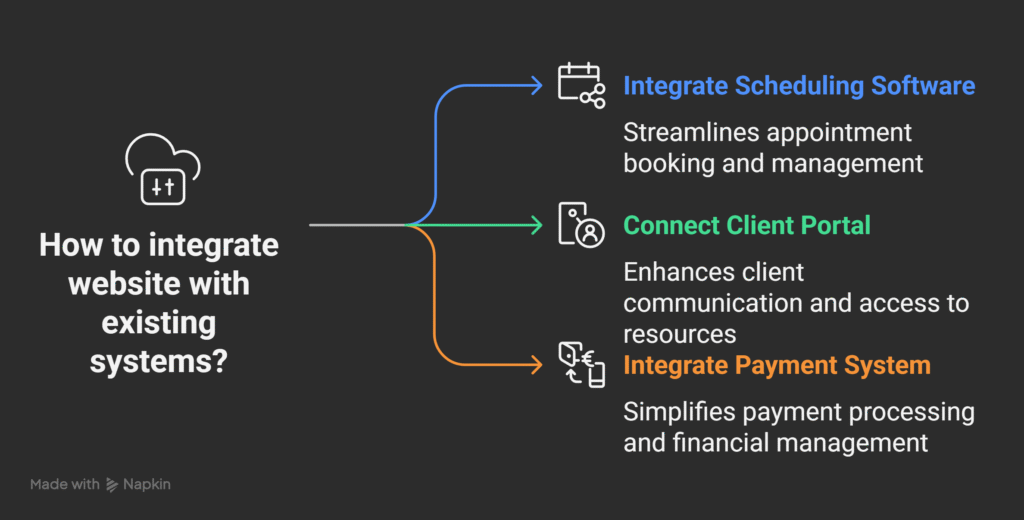
For therapists working in telehealth or hybrid models, integrating these tools properly is crucial. Consider learning more in How to Build a HIPAA-Compliant Teletherapy Website.
10. Testimonials and Trust-Builders
If you have client testimonials (with consent and anonymity), display them thoughtfully:
“I felt heard and supported from day one. Working with [Therapist] changed how I view myself and the world.”
Also add:
- License numbers and affiliations (e.g., LMFT, APA)
- Secure site SSL certificates
- Privacy policies clearly linked in the footer
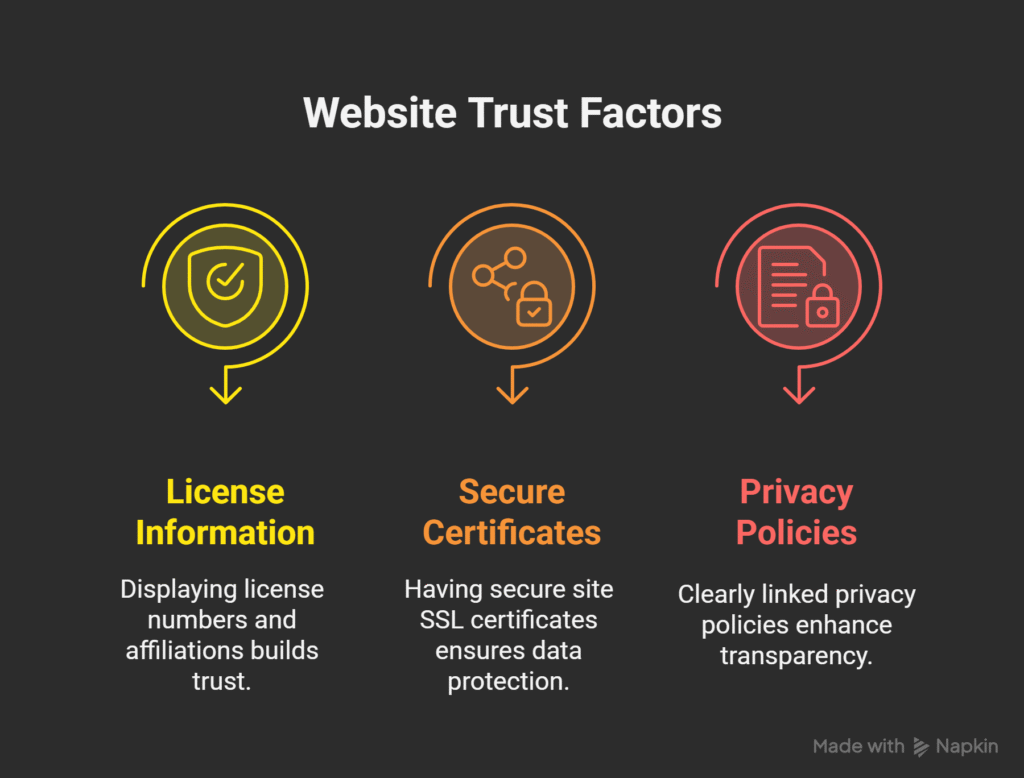
These small details reassure clients that you’re legitimate, trustworthy, and operating professionally.
Conclusion: Your Website as a Healing Bridge
Website design for mental health therapists isn’t about flash—it’s about building bridges. A warm, well-structured site welcomes clients into your therapeutic process, before they ever sit on your couch or log in for a session.
When your website reflects who you are, how you help, and why you care, it becomes your most powerful marketing and connection tool. Invest time in making it an extension of your healing space—and you’ll attract more of the people you’re meant to help.
For expert therapist website development, explore done-for-you options at Mental Health IT Solutions. Whether you’re starting fresh or ready for a redesign, you’ll find HIPAA-compliant, beautiful, client-centered solutions.






